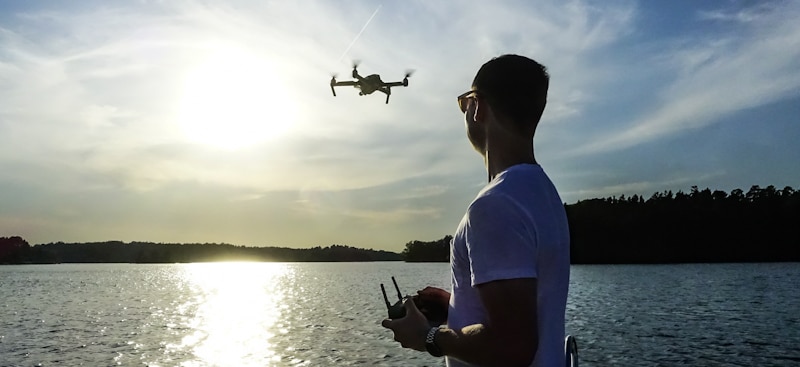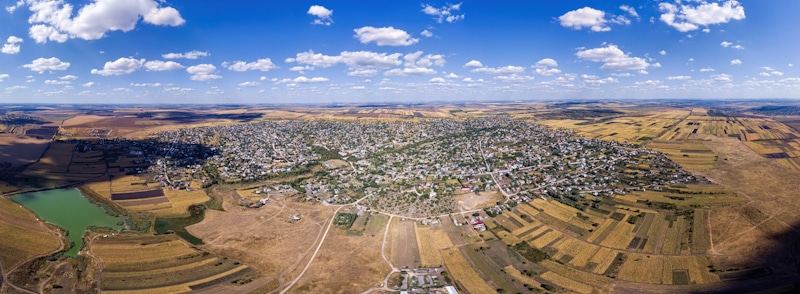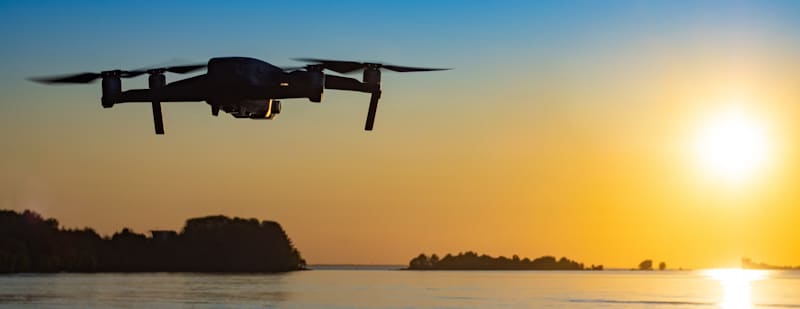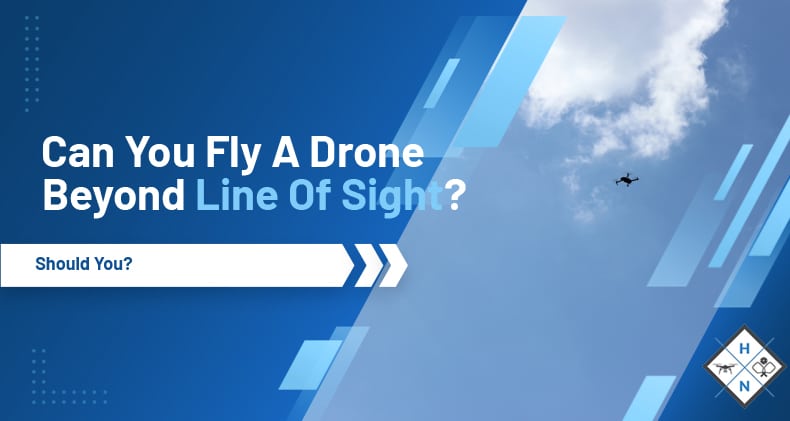Flying beyond the line of sight refers to an operation of unmanned aerial vehicles at a distance outside the visible range of the pilot. This means the pilot does not have visual sight of the drone during flight. Is it possible to fly a drone beyond line of sight?
Yes, you can fly a drone beyond line of sight as long as you have gotten a beyond visual line of sight waiver from the Federal Aviation Administration. The Federal Aviation Administration has released the BVLOS wavier guide for pilots who wish to fly beyond line of sight.
As a drone pilot, it is customary to be worried about flying your drone beyond line of sight and what will happen if you do. You should be fully informed if there are consequences of flying your drone beyond line of sight without a permit. As a drone pilot, you must know everything about flying a drone beyond the visual line of sight.

Should You Fly A Drone Beyond Line Of Sight?
Flying a drone beyond line of sight is not advisable for hobby drone pilots; however, drones are only flown beyond visual line of sight in rare cases, and only government agencies do so.
When you fly a drone beyond line of sight, monitoring the drone becomes difficult and almost impossible because you no longer have physical sight of the drone. This can cause a lot of problems for you as a hobby drone pilot.
Being a hobby drone pilot, when you fly your drone beyond line of sight, it can easily be accessed and controlled by hackers. Moreover, you will not be aware because you cannot monitor the drone's movement and know when it is being tampered with because you cannot see the drone.
Also, some drones have to be in proximity to the remote controller to communicate effectively. When you fly a drone beyond line of sight, there is a slight possibility that you can disrupt the connection between the drone and its remote controller.
It would be best if you did not fly your drone beyond the line of sight because you can quickly lose your drone when it is not in a visible range with you. You are also liable to crash your drone, especially when flying in the woods or the mountains.
However, commercial drones are sometimes required to be flown out of sight, depending on their use. Like drones used for delivery to houses will need to fly without direct visual observation, which means they will require an autopilot control and a safe beyond visual line of sight flight.
Drones used for military purposes have always been flown beyond the line of visual sight. Although there is a decent amount of drones designed to operate beyond the line of visual sight autonomously, such drones are used mainly by the military.
Hence, it would be best if you stuck to flying your drone within line of sight. This helps you keep your drone safe because you can see it and monitor the drone. Drone pilots who fly beyond visual line of sight have been fully trained to fly such drones.
These pilots must have theoretical and practical training to obtain a UAVO qualification certificate with the authority of flying drones beyond visual line of sight before they can perform beyond visual line of sight flights.
After such training has taken place and the qualification certificate has been awarded by the Federal Aviation Administration, the pilots are then allowed to fly their drones beyond visual line of sight depending on the type of situation.
Are There Benefits Of Beyond Line Of Sight Flight?
Yes, there are several benefits of operating drones beyond the visual line of sight. Most of these benefits are for commercial drones, not hobby drones. Some of these benefits include:
- The beyond visual line of sight flight allows drones to collect more data in fewer deployments.
- Deploying a drone beyond visual line of sight costs lesser than most traditional methods like manned airplanes and helicopter.
- Drones can replace the traditional long-range aerial data collection platforms.
- Flying a drone beyond the visual line of sight also helps prevent humans from being placed in a dangerous situation.
- Drones flown beyond visual line of sight can cover a far greater distance in security issues and deliveries.
- Service providers can conduct complex drone operations and also facilitate drone flying without any form of human interference.
- You can fly a drone beyond the visual line of sight to monitor large areas and create orthophoto maps.
- You can fly a drone beyond the visual line of sight to make deliveries to different organizations and even home deliveries.
- The beyond visual line of sight flight makes search and rescue operations in events and gatherings possible and more effortless.
- It helps improves the cost and effectiveness of information gathering airborne operations.
- Most emergencies like fire cases require a beyond visual line of sight flight of drones to make things faster.
The data provided by onboard instruments usually control drones that fly beyond the visual line of sight. Information is then transmitted via a telemetry link that helps inform the operator about the speed, position, altitude, direction of flight, and other relevant parameters of the aircraft.
These benefits are only for commercial purposes and organizations that make use of drones. If you are flying a drone for the first time, never fly your drone beyond the visual line of sight; if you cannot see the drone, bring it back to your location.
If you are using a drone that does not have unique features that enable a beyond visual line of sight flight mode, it might not be beneficial to you as you might lose the signal that enables control of the drone and end up crashing or losing the drone.
FAA Rules On Beyond Visual Line Of Sight Flight
Previously, public safety agencies and other drone pilots have always had to maintain a visual line of sight with the drones they fly. However, now the Federal Aviation Administration has changed the rules regarding beyond visual line of sight flight.
The public safety organizations that fly drones are now liable to apply for a beyond visual line of sight waiver from the Federal Aviation Administration. The FAA has plans to release the beyond visual line of sight waiver guide to drone pilots during the annual Unmanned Aircraft Systems Symposium.
The beyond visual line of sight flight of drones must comply with all the spatial regulations and should only be done when necessary. This means you cannot just decide to fly a drone beyond the visual line of sight whenever you feel like it; it has to be done when necessary.
The beyond visual line of sight waiver guide provides a description of different situations that you should fly a drone beyond the visual line of sight. You can only fly a drone beyond the visual line of sight in similar situations as provided in the guide.

How Far Away Can I Fly A Drone When I Cannot See?
For drone pilots and recreational drone pilots flying for the first time, you must always keep in mind flying a drone at or below four hundred feet above the ground. This is one of the primary flight guidelines and one of the Federal Aviation Administration laws.
A toy drone will fly within the range of 20 to 100 yards. As a hobby drone pilot using a toy drone, the drone will only go as far as a hundred yards away from you; it cannot exceed that limit because there has to be a connection between the drone and the remote controller.
A mid-level consumer drone has a flight range of 0.25 to 1.5 miles when away from its controller. This type of drone can go farther than this as its normal flight range. However, it can only go farther when in proximity to the controller.
A high-end consumer drone can fly for about 2.5 to 4.5 miles away from the remote controller. An average drone can cover five or more miles from the ground only when close to the remote control.
When flying a drone, you are usually the one with the remote controller, so you control the drone. If you are stagnant in a particular location, your drone cannot fly as far as its maximum flight range because there is a limit to how far away it can fly from the remote controller.
Every drone has the maximum distance it can cover when away from the controller. However, some drones can cover more miles than others, depending on the type of drone and its manufacturer. The maximum flight range of a drone is ten kilometers.
Flying a drone out of range can be very dangerous, depending on the type of drone. Drones differ from each other, and some drones have exceptional quality while others do not. If you fly an older drone and fly it past the maximum range distance, it can lose the signal needed to control it and end up dropping from the sky or even crash into something.
The older drones have less technology for safeguard than the newer and expensive ones. Some drones like the DJI drones that when you fly it out of range, it will simply turn back and return to you because of its remarkable features; it will not crash because it has a collision avoidance feature.
There is a special connection between a drone's remote controller and the drone itself. This connection is weaker when there is much distance between the two. This is why your drone must not be far from you when you are flying it so that the connection will not be lost. If the connection is lost, you will lose control of the drone.
Can You Fly A Drone Out Of Sight?
Yes, you can fly a drone out of sight. However, you need to obtain a Beyond Visual Line Of Sight waiver (BVLOS) from the Federal Aviation Administration. Flying a drone out of sight without possessing a BVLOS waiver from the FAA is a violation of one of the drone laws "you must maintain a visual line of sight with your drone."
As good as this may sound, the Beyond Visual Line Of Sight waiver is only granted to public safety organizations, not individuals. However, you can fly your drone out of sight; if caught defaulting, you are at risk of getting a fine or, at worst, getting a jail sentence.
The Beyond Visual Line Of Sight waiver has a guide that regulates how first responders are to fly their drones legally without disturbing or obstructing the populace's activities.
Below are some of the descriptions listed out in the Beyond Visual Line Of Sight waiver guide.
- First responders can pilot their drones beyond the visual line of sight to safeguard human life during extreme emergencies. In case there is a fire outbreak, first responders can fly their drones to assess the environment. They can also fly their drone beyond the visual line of sight to conduct a search for a missing person or search an area for any unlawful activity in progress.
- The first responder cannot fly his drone more than 1500 feet away from him during a Beyond Visual Line Of Sight flight. A pilot cannot fly a drone higher than 400 feet from any obstacle. For example, in an accident, the drone pilot cannot fly the drone more than 400 feet above the scene.
- The first responder can only fly out of the visual line of sight under a valid Part 91 Certificate of Authorization.
- The Beyond Visual Line Of Sight waiver can only be used during extreme emergencies where the need to safeguard human life arises.
- The first responder must fly his drone within a visual line of sight as soon as the extreme emergency has been taken care of.
- During extreme emergencies, the first responder is permitted to fly his drone in the controlled airspace as long as he does not exceed the UAS Facility Map altitude value.
Tips To Get Your Beyond Visual Line Of Sight Waiver Approved
Although the Beyond Visual Line Of Sight waiver is only granted to public safety organizations now, there is a possibility the Federal Aviation Administration may soon start accepting applications from individuals, especially commercial drone pilots.
These are some tips that will help you get your Beyond Visual Line Of Sight waiver approved faster.
- You must know the airspace you intend to fly your drone in. The airspace is separated into two, "Controlled Airspace" is the airspace above 400 feet from the ground. The FAA regulates it, and "Uncontrolled Airspace" is the airspace 400 feet from the ground; state and local authorities regulate it.
- You learn and abide by all the processes to ensure you comply with the Beyond Visual Line Of Sight waiver rules. The FAA takes special care to scrutinize everyone applying for a Beyond Visual Line Of Sight waiver, so only those with a complete understanding of the guide will have their applications approved.
- It would be best if you were sure that only the pilot submitting the application would have control of the drone at all times. The main reason for this is to regulate the number of out-of-sight drones to ensure only qualified and approved drone pilots fly their drones beyond a visual line of sight.
The Federal Aviation Administration admitted that the Beyond Visual Line Of Sight waiver is one of the most sought-after licenses and is the most difficult to get. Nevertheless, by following the application instructions and guidelines, you can have your application approved.

How To Keep Your Drone Within The Federal Aviation Administration Limit
As a drone pilot without the Beyond Visual Line Of Sight waiver, it is vital to respect the FAA regulations and fly your drone within a visual line of sight and below 400 feet. To ensure you comply with this regulation, you are advised to set the altitude limit of your drone to 390 feet, and this will ensure your drone does not fly above the limit set by the FAA.
If your drone is a DJI product, you are lucky because it is straightforward to set an altitude on DJI drones. To do so, launch DJI Go4, input your device, tap on the three dots located at the upper right corner, tap on the drone icon, scroll down to "Set Maximum Flight Altitude," and input the desired limit. The limit is always in meters to set the altitude limit to 118 meters, which is about 390 feet.
Final Thoughts
Flying a drone beyond line of sight is relative and dependent on whether you have a Beyond Visual Line Of Sight waiver or not. It is not advised to fly your drone beyond line of sight when you do not have a waiver; you are violating FAA regulations and can be punished for it.
Fortunately, the FAA is almost open to accepting BVLOS waiver applications from commercial and recreational drone pilots. So, you can be among the lucky ones to be approved, but knowledge and compliance are of vital importance.
Shawn Manaher loves to play with new toys and dive into new hobbies. As a serial entrepreneur, work definitely comes first but there is always room for hobbies.

